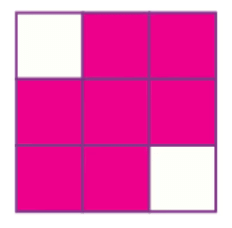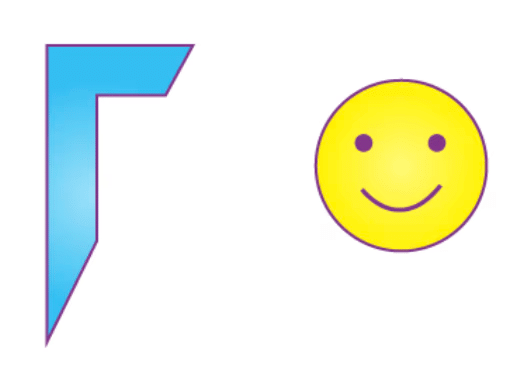Unit Test: Symmetrical Designs | Mathematics (Maths Mela) Class 5 - New NCERT PDF Download
Time: 1 hour M.M. 20
Attempt all questions.
- Question numbers 1 to 5 carry 1 mark each.
- Question numbers 6 to 8 carry 2 marks each.
- Question numbers 9 to 11 carry 3 marks each.
Q1: Which of the following shapes has both reflection and rotational symmetry? (1 mark)
(a) Rectangle
(b) Parallelogram
(c) Equilateral Triangle
(d) Scalene Triangle
Q2: How many lines of symmetry does a regular hexagon have? (1 mark)
(a) 4
(b) 6
(c) 8
(d) 2
Q3: A square has rotational symmetry of order _________. (1 mark)
(a) 3
(b) 2
(c) 4
(d) 6
Q4: Which of the following figures has reflection symmetry but no rotational symmetry? (1 mark)
(a) Circle
(b) Scalene Triangle
(c) Equilateral Triangle
(d) Regular Pentagon
Q5: List the alphabets which are having a reflection about vertical symmetry. (1 mark)
Q6: Draw a shape that does not have symmetry. (2 marks)
Q7: Can we say that a circle has rotational symmetry? (2 marks)
Q8: Does the image have a symmetry along x- axis? (2 marks)
Q9: Show the rotational symmetry of an equilateral triangle. (3 marks)
Q10: Draw the lines of Symmetry for the following shapes. (3 marks)

Q11: Draw two figures other than a circle and a square that have both reflection symmetry and rotational symmetry. (3 marks)
You can access the solutions to this Unit Test here.
|
35 videos|276 docs|7 tests
|
FAQs on Unit Test: Symmetrical Designs - Mathematics (Maths Mela) Class 5 - New NCERT
| 1. What are symmetrical designs and why are they important in art and mathematics? |  |
| 2. How can symmetrical designs be created using geometric shapes? |  |
| 3. What are some real-world examples of symmetrical designs? |  |
| 4. How does understanding symmetry benefit students in their studies? |  |
| 5. What activities can teachers use to teach symmetrical designs to students? |  |















